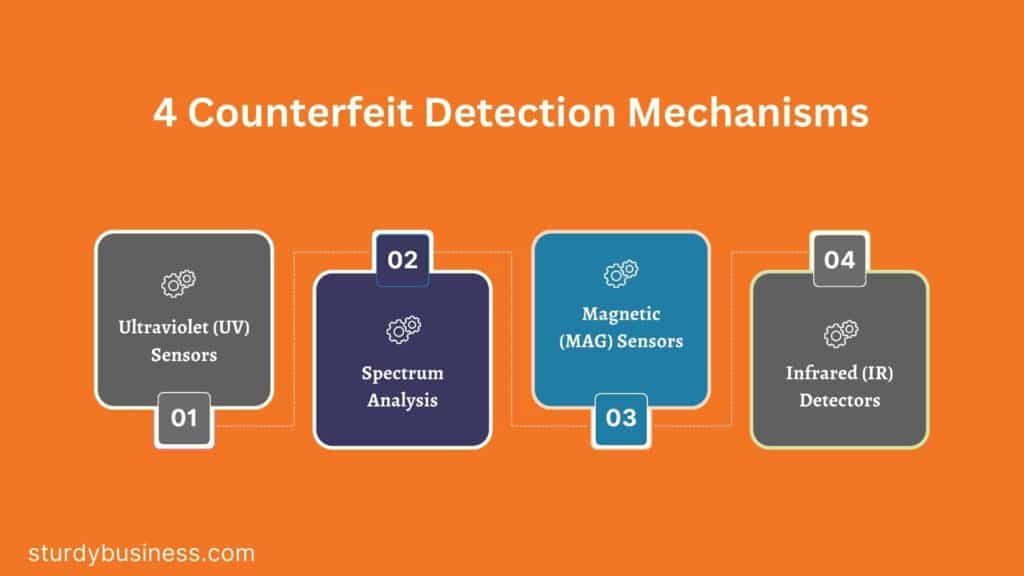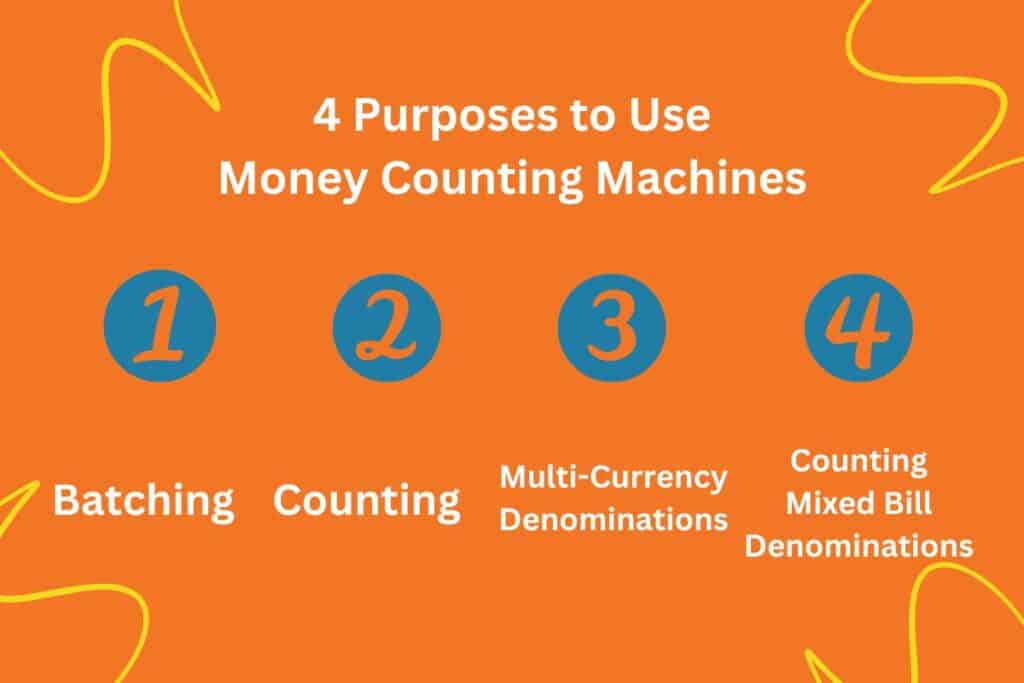Almost every business whose earnings flow through cash, such as brick and mortar, laundry shops, gas stations, superstores, or even banks, is bound to use money counter machines.
Because not only does manual counting lead to human error, but it is also time-consuming.
And let’s not neglect the inevitable loss of money due to counterfeit bills. We lose billions of dollars due to counterfeit bills.
These drawbacks have made money counters a necessity.
There are many other reasons to buy money counters.
However, to understand their real importance, knowing how these machines operate is necessary. What principle do they work on? And are they worth investing in?
For this purpose, we have, after thorough research, gathered information about how the money-counter machines work and how they detect counterfeit bills.
Based on our experience and information, we have also reviewed the 10 best money counting machines that work perfectly for all businesses.
Working Mechanism Behind the Money Counting Machine
The money counter machines work with the help of different sensors.
When money is placed in the hopper, a sensor activates and pulls it in. The bills are then passed through a roller where light sensors are installed.
Rolling money bills interrupt the light when they pass through the light beam.
The number of times the sensor is interrupted accounts for the number of bills rolled, i.e., it tells the machine how many cash bills there are. Hence, total counting appears on the screen; it all happens in a while.
This is a general method that almost every counter uses. However, multi-currency counter machines have additional color image sensors for denomination currencies.
The denomination bills are identified through their distinct colors as they pass through the roller.
Each denomination bill has a specific color pattern, design, and size. These measures are pre-installed in the machine’s software.
For instance, a $10 and a $100 bill have gazillions of differences visible to the naked eye.
The color sensors identify these note patterns and count them accordingly.
Do money counters detect fake money?
Yes, almost all money counters are equipped with fake money detectors (aka counterfeit detectors).
This technology has saved millions of dollars via its advanced anti-counterfeit measures. Whenever the machine detects a fake bill, either it stops counting and beeps the alarm (sometimes indicating the type of counterfeit bill on the screen) or rejects the money and transfers it to the reject pocket.
Money counter machines, which are equipped with a Counterfeit Detection mechanism, use Ultraviolet detectors (UV), Spectrum analysis, Magnetic sensors (MAG), and Infrared detectors to identify counterfeit bills.

Ultraviolet (UV) Sensors
Modern US currency is made with special fluorescent ink, which is only visible under ultraviolet (UV) light at a certain frequency.
When UV light is thrown on the bills, and the patterns drawn through fluorescent ink do not glow, the money counting machines reject the bills due to the anti-counterfeit measures.
Spectrum Analysis
Every bill is designed with a specific color scheme and pattern. Copying these patterns is really difficult for counterfeiters.
Counting machines are employed with each spectrum of color and pattern. And if a slight deviation from this spectrum is spotted, the money counter machine rejects the bills.
This method is not advanced and 100% accurate, but it works for most of the low-end counterfeit bills.
Magnetic (MAG) Sensors
Magnetic sensors in money counter machines sense the magnetic strips or threads embedded in bills. The central bank took an anti-counterfeit measure.
Counterfeit bills lack these magnetic strips, which help the cash counter machines recognize counterfeit bills.
Infrared (IR) Detectors
Infrared detectors are the most reliable method of cash scanning because it is almost impossible for counterfeiters to pass through IR tests.
Infrared light scanners operate via light absorption and emission techniques.
The infrared light ink is either reflected when passed through infrared waves (also known as infrared light reflection tech).
Or the bill absorbs the whole light within and appears black except for some spots that are intended to stay colored (known as the infrared light absorption technique).
Some currencies – around the world– lack the infrared ink mechanism. So many bills have their own detection measures, such as Infrared bill thickness detection.
Each currency comes with a specific thickness. And the difference between each currency is really minute and impossible for counterfeiters to replicate.
This precise detection mechanism is what makes Infrared detecting counters the best money counter machine.
The advanced anti-counterfeit technologies – unrecognizable through the naked eye – and robust speed of counting have made counting machines a must-have for banks and businesses.
How to Use A Money Counter Machine?
Using a money counter machine is a piece of cake. Yet there are some technical steps that you should take care of.

For Counting:
Step #1. Turn on the main switch installed at the back of the counter
Step #2. Place money in the hopper
Put the money stack you intend to count. But first, figure out what the orientation and size of the hopper is.
Is it front-loading or back-loading hopper?
Front-loading hoppers require you to place money in a horizontal position. For backloading hoppers, money is placed facing you vertically.
The size of the hopper tells you how much money can be put in one go; it is usually written in the manual.
Once these meters are measured, put money in and proceed to the next step.
Step #3. Press the start button
Most money counters are equipped with sensors that start counting as soon as the money stack is put in the hopper. But some machines would require you to press the start button.
Step #4. Let the bundle of money roll through the roller
Step #5. The total counted measures will appear on the screen
These are 5 easy steps to count your money bills through money counter machines.
However, there are some other technical features you must thoroughly understand.
For Batching:
Batching is the process of dividing the money into equal parts. Mostly, this method is used for convenient bank deposits.
Some additional steps are involved in batching (other than those mentioned above).
Follow the first 3 steps of counting and then follow these below-mentioned:
Firstly, you need to figure out if your machine has a batching feature. How do you find it?
Simply look at the manual or look for the batching button on the machine.
Set the number of bills you want to segregate. For instance, you want to batch 200 bills into batches of 25. Then set the number on the screen to 25.
Press the continue button, and the machine will automatically stop after 25 bills.
Pick them up, and the process will continue unless you turn the batching mode off.
For Counting Mixed Bill Denominations:
For mixed-denomination bills, just put the money in the hopper, and the machine will automatically count all the money. And show each denomination on the screen.
If you had thirty $100 bills and eighty $10 bills in the bundle, it would show them accordingly.
For Multi-Currency Denominations:
A handful of counter machines offer a multi-currency denomination feature.
And it’s pretty easy to set up.
Select which currency you are dealing with from the options available on the machine. And let the counter machine do its job.
For the record, the counter machine will comprehend the currency accordingly. The final results will then be shown on the screen.
Final Verdict
A money counter machine works by sensing the number of bills passed through the light beam.
It also uses some advanced AI technology to detect counterfeit bills to keep your money safe from being scammed.
These AI (Artificial Intelligence) advancement has not only made counting easier and saved us a lot of time. But its counterfeit technology has saved us millions of money too.
Which makes them a must-have for every cash-operating business.